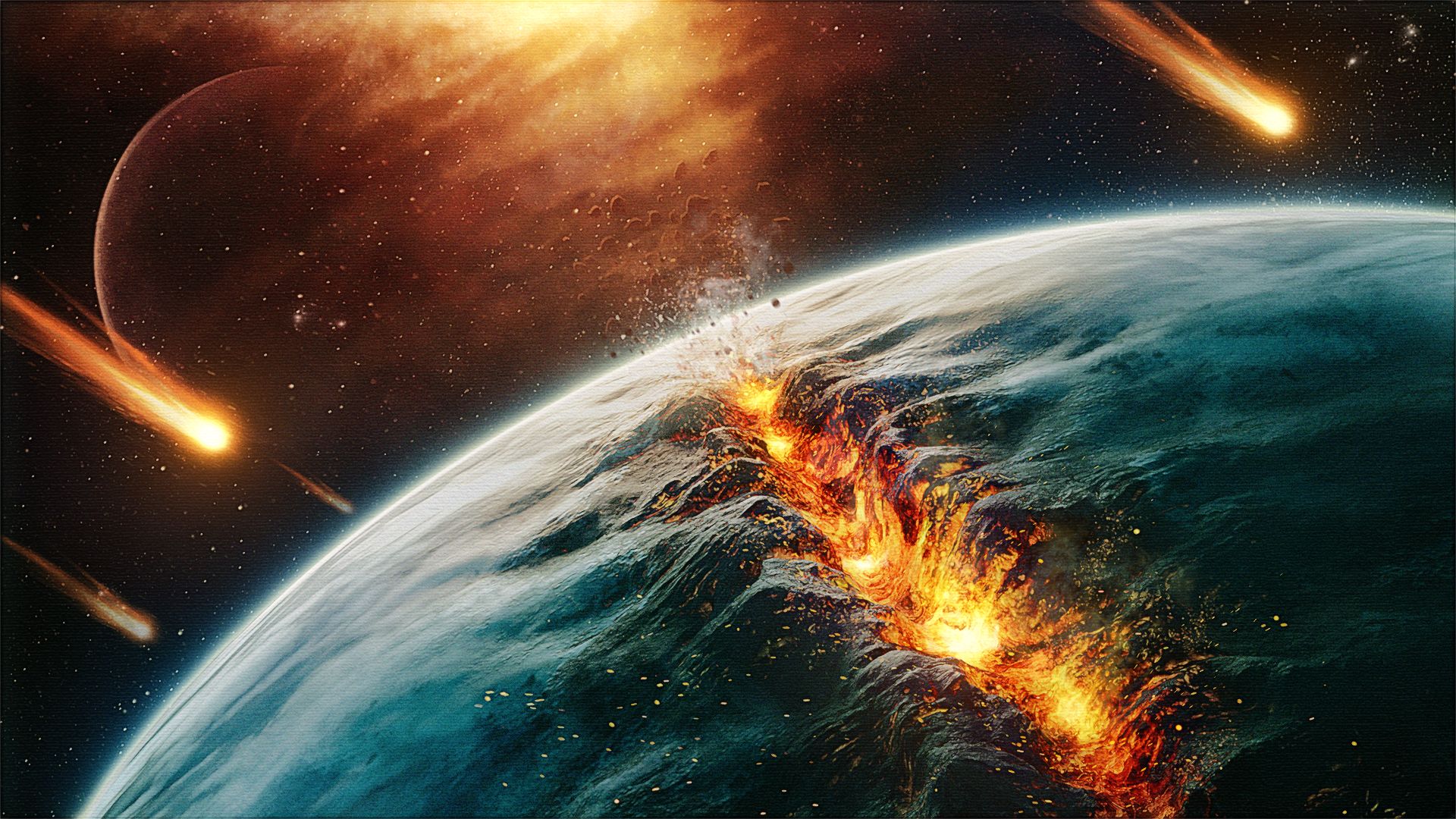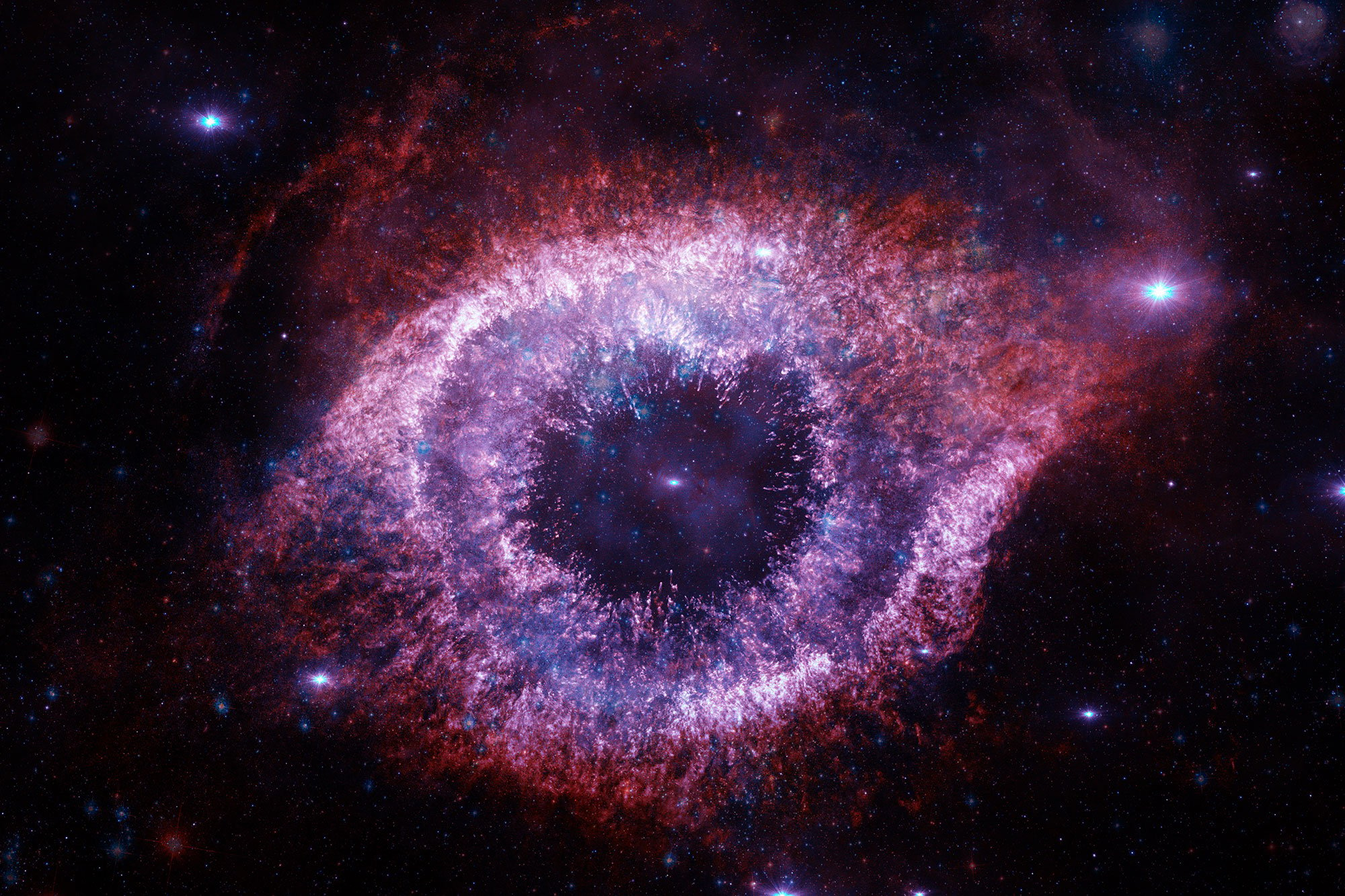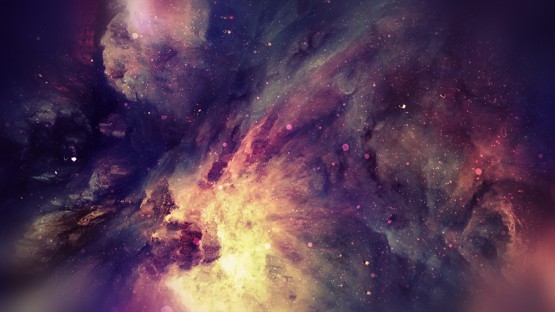Sign up for the Starts With a Bang newsletter
Travel the universe with Dr. Ethan Siegel as he answers the biggest questions of all.
Going all the way back to ancient times — sometimes attributed to Persia, other times to King Solomon, and still at other times to far eastern sources — one of the most important reminders of the transient nature of all things, good and bad, is encapsulated in the simple saying, “this too shall pass.” Both joy and sorrow are temporary, as is life itself. The stars, shining brightly throughout the sky, will all someday burn out; the galaxies will someday turn dark. Even if the timescales for some of these phenomena are barely fathomable to the human mind, the fact remains that everything within the Universe, and even the Universe itself, will someday cease to exist as we know it.
But has science truly learned enough to declare what the nature of our ultimate cosmic demise will be? Can we speak confidently about when that demise will occur? And is there wiggle room for an alternative outcome; is what we think we know today only provisional, and what sort of evidence could change our minds? That’s what Kyle Brewer wants to know, writing in to succinctly ask:
“What does the most current science indicate for the death of the Universe? Is heat death still the most likely option? If not, what does that mean? Big Crunch? Big Rip?”
There’s a lot to unpack about this question, including:
- what “death of the Universe,” including all of its components, means,
- how the expansion rate plus the contents of the Universe determine its fate,
- what our best measurements indicate,
- and what alternative scenarios remain viable, and how upcoming data could change this scenario.
That’s an awful lot to go through, so let’s get started.

The dwarf galaxy DDO 68 (UGC 5340) is only about 40 million light-years away, and contains a huge, bright population of recently-formed stars. In 2019, new Hubble Space Telescope data detected a previously unseen merging companion, which confirms the picture of hierarchical mergers, even at late times, on the scales of dwarf galaxies. When new stars form, they come in all different masses and colors, with the longest-lived stars being the coolest, reddest, least massive ones that still undergo nuclear fusion in their cores.
Credit: NASA, ESA, and the LEGUS team
Stars come in a wide variety of different types: from hot, massive, blue stars that burn through their fuel quickly and die in as little as 1-2 million years, to cool, low-mass, red dwarf stars that only experience nuclear fusion in a tiny region of their cores, burning for 100 trillion years or more. Over extremely long periods of time, sub-stellar objects that are too low in mass to become red dwarfs — the brown dwarfs, or “failed stars” of our Universe — can absorb more matter from their surroundings or merge with other brown dwarfs, transforming into true stars when they cross that critical mass threshold far into the future.
While our Sun will only live for around a total of 10-12 billion years, the longest-lived stars will:
- last for 1014 years,
- continuing to form from gaseous material for up to 1015 years,
- and can form through mergers for anywhere between 1017 up to 1019 years to come,
ensuring that even just our local Universe, including the Milky Way and the other galaxies that are part of the Local Group, will continue to have stars (and points of light, and possibilities for supporting life) for all that time to come. As long as there are stars burning, the Universe is still alive.
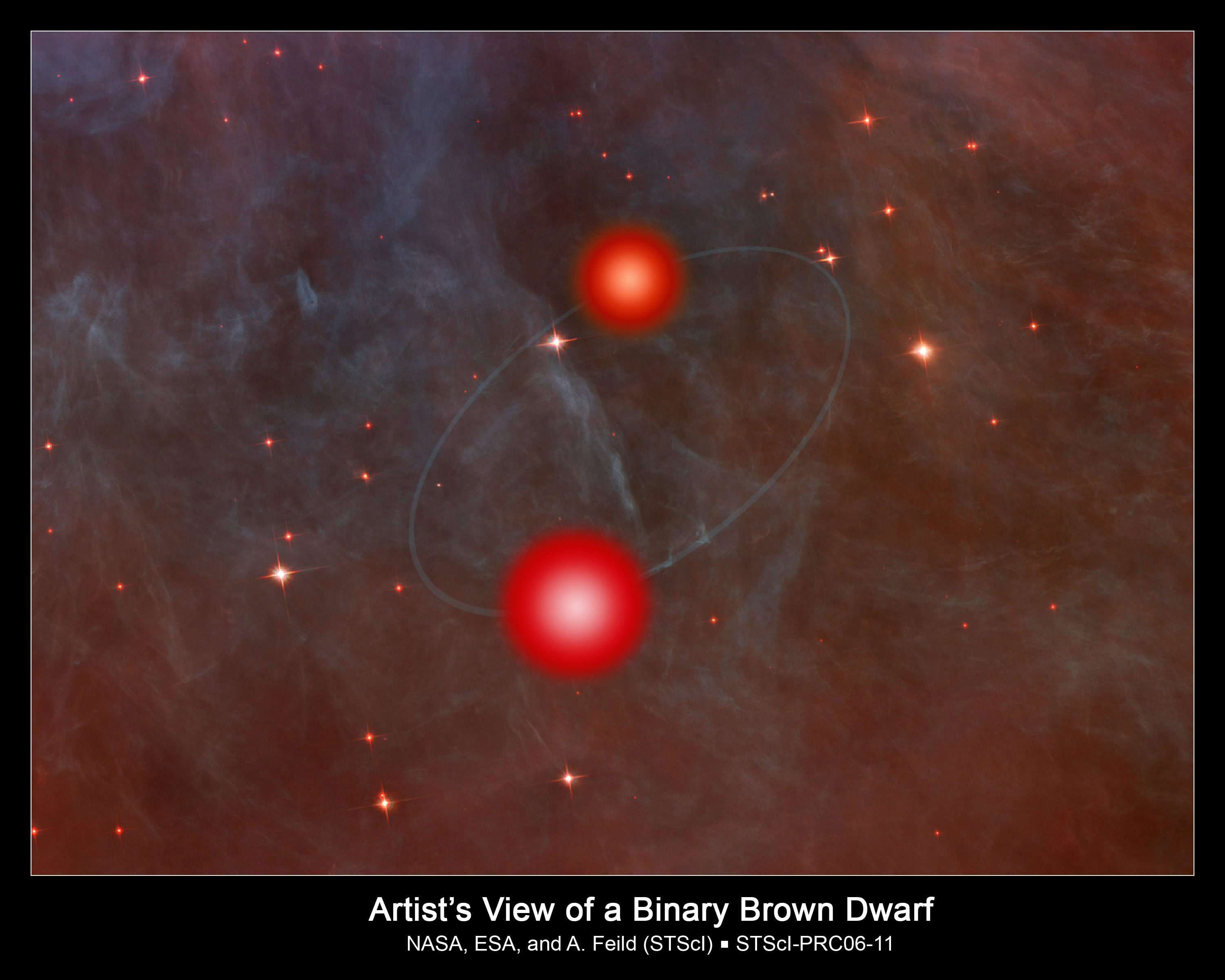
Just as stars often exist in binary, trinary, and more populous multi-star systems, so too do brown dwarfs: failed stars. It’s possible that there are binary brown dwarf systems with sufficient separations to enable the inspiral and merger of these components a very long time from now, where they will ignite hydrogen fusion in the post-merger red dwarf that forms. If any orbiting worlds exist at the right distance around the newly formed red dwarf, life may eventually arise even quintillions of years into the future, or more.
Once those final stars die, however, they will contract — becoming degenerate stars known as white dwarfs — and gradually fade away as they cool. That cooling phase lasts a long time, as there’s a lot of heat trapped inside these former stars: heat that can only be radiated away through their comparatively small surfaces. For a white dwarf, they’re comparable to the mass of the Sun (or a lower-mass star), but in volume, they are comparable to an Earth-sized planet. White dwarfs will cool to become black dwarfs after about 1014 years or so, and the even smaller neutron stars will cease to emit visible light after around 1015-1016 years.
Meanwhile, gravitational interactions will still occur between all of the individual objects within a gravitationally bound structure:
- planets in a stellar system,
- stars within a galaxy or globular cluster,
- stellar remnants like white/black dwarfs, neutron stars, and black holes,
- including gravitational waves emitted from within bound systems.
Planets will spiral into their stellar remnants or get ejected on timescales of 1025 years or so. The stellar remnants within a galaxy will largely get ejected more quickly: on timescales from 1019-1021 years. And then the black holes themselves will decay: on timescales of anywhere from 1067 (for solar mass black holes) to 10103 (for the heaviest supermassive black holes) years.

When a black hole either forms with a very low mass, or evaporates sufficiently so that only a small amount of mass remains, quantum effects arising from the curved spacetime near the event horizon will cause the black hole to rapidly decay via Hawking radiation. The lower the mass of the black hole, the more rapid the decay is, until the evaporation completes in one last “burst” of energetic radiation. The longest-lived black holes will be the most massive, with decay timescales exceeding 10^100 years.
However, it’s not just the demise of astrophysical objects, or the ability to extract energy from them, that will determine the “death” of the Universe. There’s also the fact that, from a cosmic perspective, the Universe is expanding. According to the laws of general relativity, if your Universe is uniformly filled with one or more types of energy (dark matter, normal matter, radiation, dark energy, etc.), then:
- the total amount of energy density present in the Universe determines your expansion rate,
- and the way those different forms of energy evolve determine how the expansion rate and the expansion’s behavior will evolve, even arbitrarily far into the future.
We know our Universe is made of about 32% matter, including both normal and dark matter, and that it’s made of about 0.1% neutrinos and 0.01% radiation (in the form of photons). We also know that the remaining 68% or so is dark energy, and that dark energy appears to be consistent with a cosmological constant. (At least, to within the uncertainties on the full suite of data, combined.)
This means that, today, dark energy dominates the Universe, while dark matter and normal matter play a sub-dominant role. Radiation and neutrinos, although they were important early on, appear to be negligible today.

The relative importance of different energy components in the Universe at various times in the past.
Dark matter has been largely important for extremely long cosmic times, and we can see its signatures in even the Universe’s earliest signals. Meanwhile, radiation was dominant for the first ~10,000 years of the Universe after the Big Bang. Note that in the future, when dark energy reaches a number near 100%, the energy density of the Universe (and, therefore, the expansion rate) will remain constant arbitrarily far ahead in time.
Based on our best observations, the Universe expands, today, at a rate of about 70 km/s/Mpc, with a slight tension between early relic methods (like the CMB and BAO, which favor a slightly lower value of 67 km/s/Mpc) and late-time distance ladder methods (like using parallax, variable or giant stars, and galactic measurements like rotational information, surface brightness fluctuations, or type Ia supernova light curves, which favor a higher value of 73 km/s/Mpc).
If we ignore that puzzle about the Hubble tension — something that we will return to later — and also assume that dark energy truly is a cosmological constant, then it’s fairly straightforward to determine the fate of the Universe. Dark energy, in a Universe with the parameters we just laid out, will come to dominate the expansion of the Universe when approximately 7.8 billion years have elapsed since the start of the hot Big Bang. From our current perspective, that transition has already occurred: it happened about 6 billion years ago.
During those first 7.8 billion years of cosmic history, gravitation had a golden opportunity to win out. Matter clumped and clustered together under the relentless pull of gravity, and structures grew and grew on progressively larger scales. From even tiny initial seed fluctuations in the matter density of the Universe, star clusters, galaxies, groups and clusters of galaxies, and even larger structures like superclusters began to form.

This snippet from a structure-formation simulation, with the expansion of the Universe scaled out, represents billions of years of gravitational growth in a dark matter-rich Universe. Over time, overdense clumps of matter grow richer and more massive, growing into galaxies, groups, and clusters of galaxies, while the less dense regions than average preferentially give up their matter to the denser surrounding areas. The “void” regions between the bound structures continue to expand, but the structures themselves do not.
But then, the matter density, owing to the Universe expansion, continues to drop and drop. At some point, it drops so severely that dark energy becomes the dominant factor in determining the Universe’s expansion. And then, when this event occurs — which, again, already happened in our Universe about 6 billion years ago — it passes a critical threshold. Only the structures that were already gravitationally bound together at that moment, not including the structures that were still collapsing and contracting on their way to becoming gravitationally bound, will actually be able to hold together. Things that were forming structures on larger cosmic scales, like the aforementioned superclusters, will instead be torn apart by the relentless expansion of the Universe.
This explains why, today, we can see objects that are up to about 46 billion light-years away in any direction, but we can only hope to reach or engage in two-way communication with objects that are much closer: around 16-18 billion light-years away. As time goes on, objects that are gravitationally unbound from one another will recede away from one another at ever-increasing rates. For us, here in our Milky Way, that means the other objects in the supercluster Laniakea will remain bound to their home galaxies, as well as in galactic groups (like our Local Group, of which we are a member) and galaxy clusters (like the Virgo cluster, of which we are not a member), but that individual groups and clusters will all recede away from one another, faster and faster, eventually becoming unreachable to one another.

In a Universe that comes to be dominated by dark energy, there are four regions: one where everything within it is reachable, communicable, and observable, one where everything is observable but unreachable and incommunicable, one where things will someday be observable but aren’t today, and one where things will never be observable. The labeled numbers correspond to our consensus cosmology as of 2024, with boundaries of 18 billion light-years, 46 billion light-years, and 61 billion light-years separating the four regions. On scales of ~10 billion light-years and larger, the Universe is almost perfectly uniform.
That’s the fate we’re looking at. In fact, in just 100 billion years, it’s only the galaxies within our Local Group that will be reachable by us; the others will all have been “pushed away” by dark energy and the expansion of the Universe so that they’re beyond our ability to even reach or communicate with at the speed of light. There will be no Big Crunch, because there isn’t enough matter in the Universe to defeat the expansion and lead to a recollapse. And there will be no Big Rip, because dark energy appears to be a cosmological constant. Only if dark energy evolves over time,
- becoming “more negative” to lead to a Big Rip,
- becoming “positive” to lead to a Big Crunch,
- or decaying away through some sort of phase transition to lead to a catastrophic “bubble of destruction” event,
can this standard heat death scenario be averted.
If you had asked this question just a few years ago — and FYI, someone did — this would have been the best answer one could have given to the question of how our Universe would have ended. And yet, today, a few pieces of evidence are compelling us to reconsider this scenario. For one, there’s the Hubble tension, throwing the expansion rate of the Universe into doubt. For another, there’s the DESI data, our best large-scale structure data at present, which seems to slightly favor the presence of evolving (and, in particular, decaying or weakening) dark energy. If we consider this, perhaps we have to consider the possibility that dark energy really is weakening, and that brings along with it a potential reconsideration of our ultimate fate.

These graphs show the fit for evolving dark energy, in terms of the parameters w_0 and w_a, where a constant cosmological constant for dark energy corresponds to w_a = 0 and w_0 = -1, exactly. Note that the DESI data on its own is consistent with constant dark energy, but that when you combine CMB and supernova (for example, DESY5, as shown in the middle panel) data with it, it favors evolving dark energy instead.
Above, you can see the best-fit parameters to the DESI data as far as dark energy is concerned. What you’ll notice, immediately, is that there’s some evidence (although it isn’t as significant as we demand to cross the threshold for “discovery”) that dark energy:
- at one point behaved as a cosmological constant, with a dark energy equation of state of w = -1,
- and then, recently, appears to be weakening, with the equation of state’s key parameter increasing at late times to w = -0.8.
This is shown by w0 on the x-axis, which would be -1.0 if dark energy were a cosmological constant (but greater if it’s weakening), and wa on the y-axis, which would be zero if dark energy were constant (but negative if it’s weakened over time). If dark energy were to remain at w = -1, that would be the equivalent of having a cosmological constant, leading to the heat death scenario outlined previously. But if dark energy is weakening by w becoming more positive over time, then a few interesting possibilities result.
- If w remains between -1 and -⅓ at all times, then the heat death fate of the Universe will persist and distant galaxies will keep on accelerating, even if dark energy isn’t a constant.
- If w becomes more negative than -1 and stays there, then dark energy will strengthen sufficiently that it will lead to a Big Rip, with “more negative” values leading to a faster Big Rip.
- Or if w evolves to keep on increasing, eventually increasing to become positive (greater than 0), then the expansion will indeed reverse itself and lead to recollapse, with the timescale for recollapse determined by how quickly w becomes positive and by how large it eventually becomes.
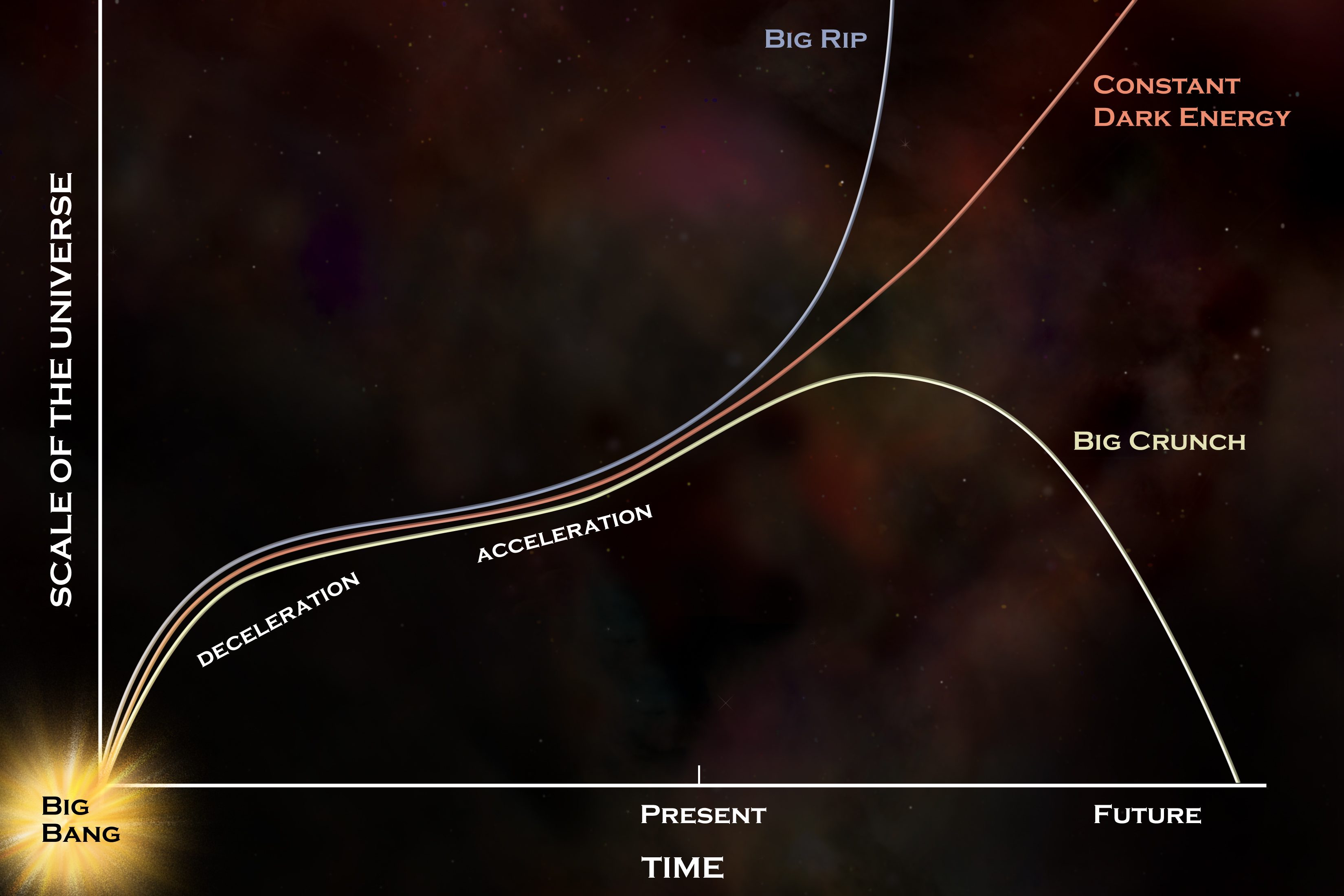
The far distant fates of the Universe offer a number of possibilities, but if dark energy is truly a constant, as the data best indicates, it will continue to follow the red curve, leading to the long-term scenario frequently described on Starts With A Bang: of the eventual heat death of the Universe. If dark energy can strengthen, weaken, or reverse sign over time, however, all bets are off, and alternative possibilities, like a Big Crunch or a Big Rip, suddenly abound.
Because w, and its time evolution, is so poorly measured, it’s easy to construct “models” for how w evolves that can lead to almost any answer at all for the fate of the Universe, as well as the timescale in which the Universe will encounter that fate. Our Universe has presently been around for about 13.8 billion years since the start of the hot Big Bang, and the small apparent evolution in dark energy could lead to a lot of different possibilities in the future. For example:
- If w becomes more negative and goes down to w = -1.5, then the Universe only has about 22 billion years left before ending in a Big Rip.
- If w becomes positive and increases by a value of 0.2 every 5 billion years, then the Universe will recollapse in about 33 billion years.
- If w rises but asymptotes to zero (from below), then the ultra-distant galaxies we see at the limits of our observation will remain reachable and, eventually, two-way communicable, changing our expected fate.
In fact, there are more exotic possibilities that cannot be ruled out, at present, as well. One of them is truly terrifying: that dark energy, which represents a form of energy inherent to space itself, is actually in a state of unstable equilibrium, trapped in a “false vacuum” state. This state, then, has the potential to quantum tunnel into the true vacuum state, whereupon the laws of nature will abruptly change, including the fundamental constants that govern the Universe and allow structures, like atoms, to form. Wherever this transition occurs, it will create a “bubble of destruction” that propagates outward at the speed of light, instantly destroying any stars, galaxies, planets, or humans that it comes into contact with. It would lead to the instantaneous demise of anyone and everything it encountered.

In a vacuum decay scenario, our Universe exists in a false minimum state, and it’s possible to arrive, either through quantum tunneling or an energetic kick that causes us to leave that state, to enter a true (or truer) vacuum state. If that happens anywhere, every bound structure, from protons on up, will be destroyed in a “bubble of destruction” propagating outward at the speed of light.
So how are we going to determine which one, of all the possible fates for our Universe, is actually going to occur?
The key is to obtain superior measurements of the large-scale structure of the Universe, and in particular of the baryon acoustic oscillation signature imprinted into it. These baryon acoustic oscillations are relics left over from the hot Big Bang, imprinted into the primordial plasma (and visible in the acoustic peak signature in the CMB), and then, as the Universe expands and forms galaxies, show up in the galaxy clustering signatures visible across all of cosmic time.
The DESI data that we have, data that’s suggestive of, but not conclusive proof for, evolving dark energy, is the best such data we have at present. But four independent mapping missions:
all have the potential to reveal this baryon acoustic oscillation signature more robustly, precisely, accurately, and comprehensively than DESI, or any other mapping endeavor before it. The goal is to not just measure w and its evolution, but to constrain those key parameters down to (or even below) the 1% level. If dark energy is evolving, then our fate might yet differ from the standard “heat death” scenario outlined in the first two-thirds of this piece. But it will take better data and superior science to find out: science that, at least according to current plans, should be well on its way.
Send in your Ask Ethan questions to startswithabang at gmail dot com!
Sign up for the Starts With a Bang newsletter
Travel the universe with Dr. Ethan Siegel as he answers the biggest questions of all.
Source link
